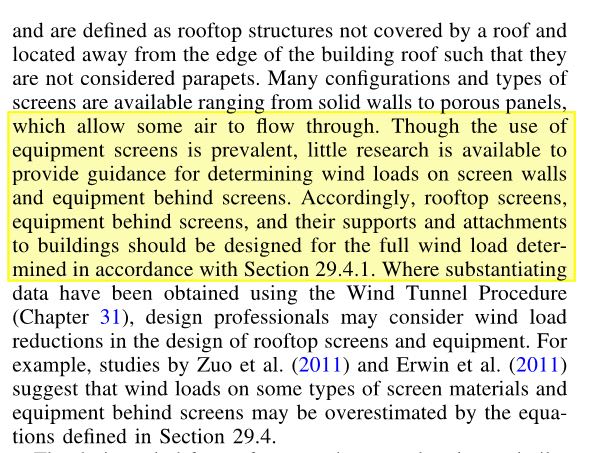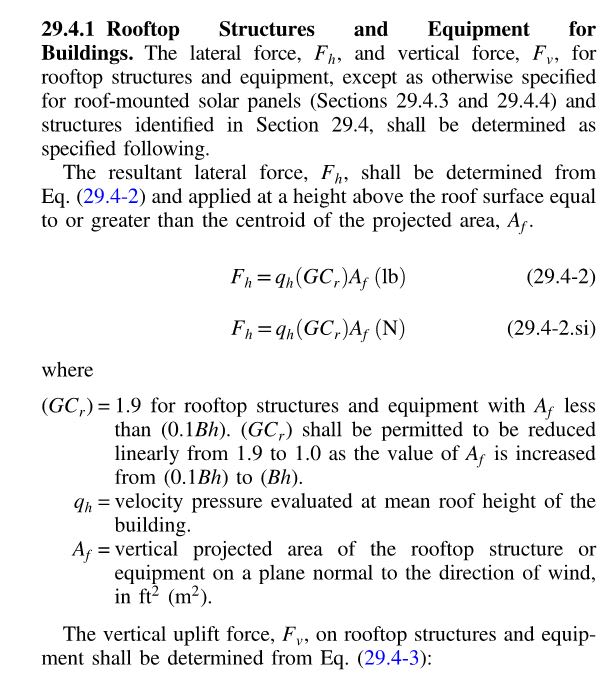SteelPE
Structural
- Mar 9, 2006
- 2,759
I am in the process of designing a large single story warehouse (340'x176'). The building is to be designed utilizing ASCE 7-10. To make the building architecturally pleasing, at 2 locations along the front of the building the architect is placing a 6'-0" tall parapet (these parapets also help define the entrances to the building). In order to give the entrances some depth, the architect is returning the parapet into the building 30' or so. I am trying to calculate the wind loads on these parapet returns.
The closest these return walls are to the windward edge of the building is 42'. I can't really seem to justify designing these systems as a parapet in accordance with ASCE 7-10 as they are no located at the edge of of the building (being located 42' from the windward edge). I am leaning towards designing these return walls in accordance with section 30.11 (rooftop structures). Is this the correct approach?
The closest these return walls are to the windward edge of the building is 42'. I can't really seem to justify designing these systems as a parapet in accordance with ASCE 7-10 as they are no located at the edge of of the building (being located 42' from the windward edge). I am leaning towards designing these return walls in accordance with section 30.11 (rooftop structures). Is this the correct approach?


